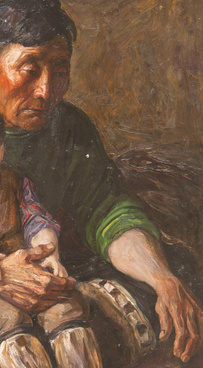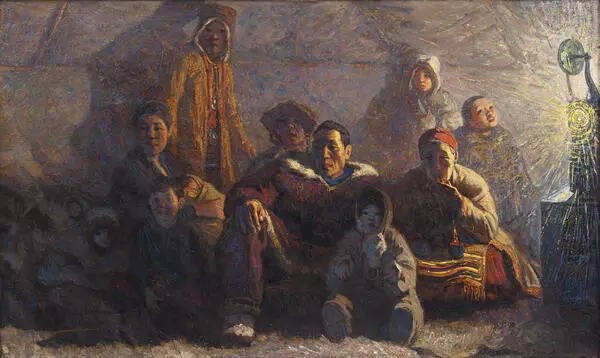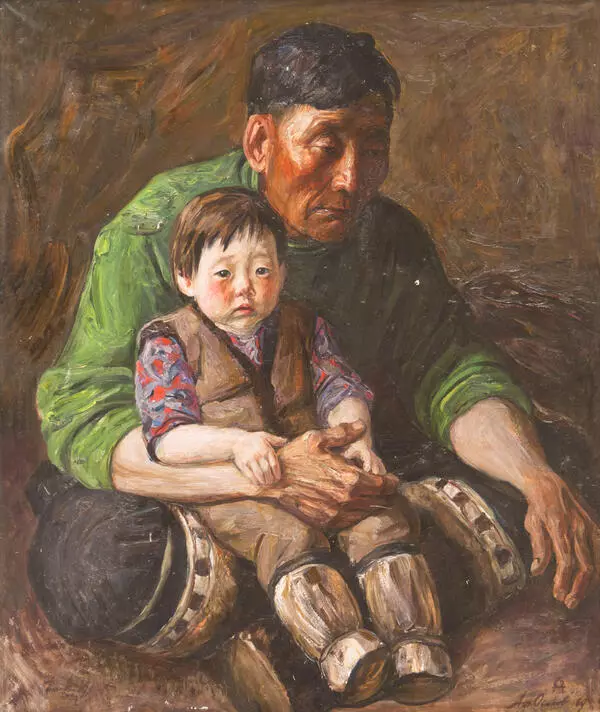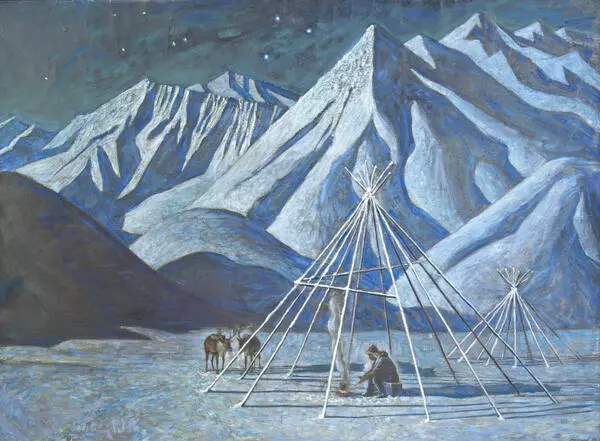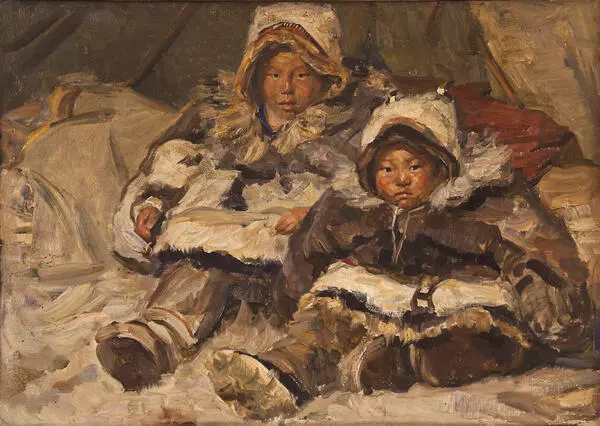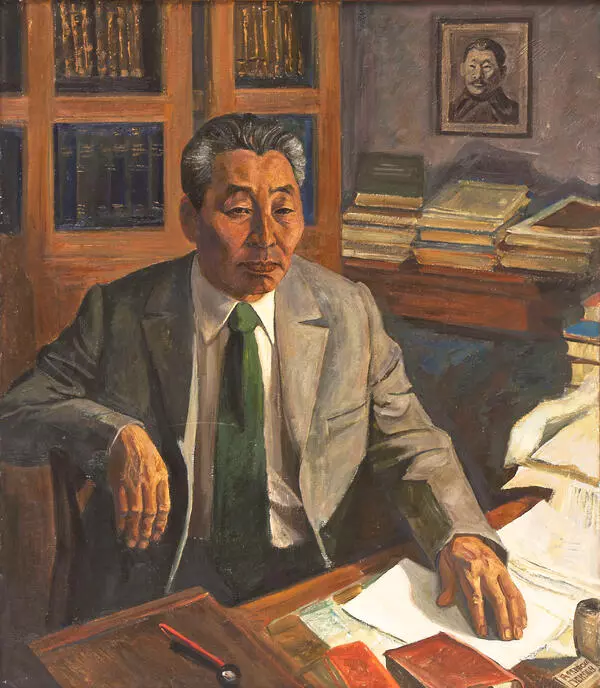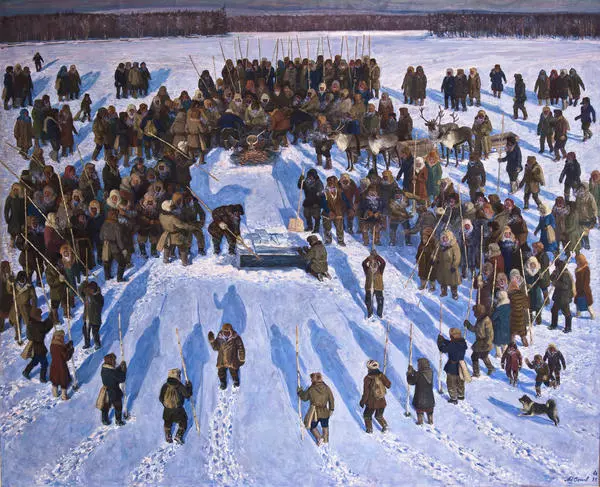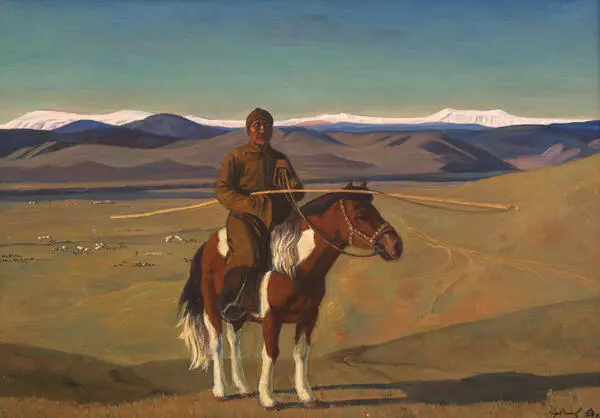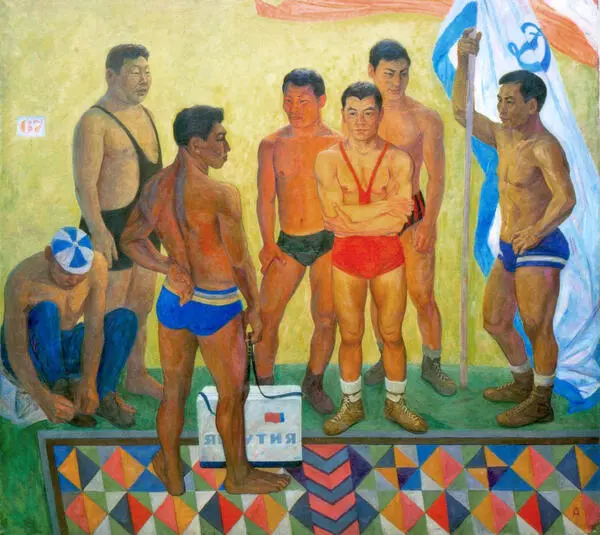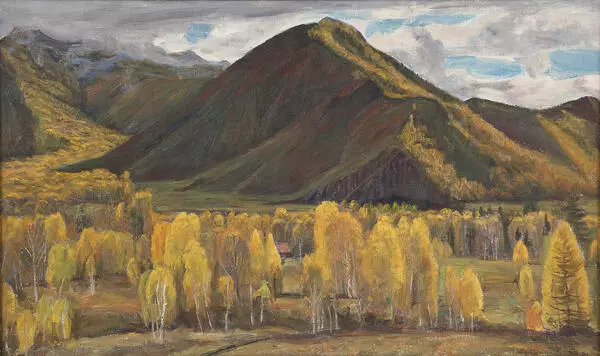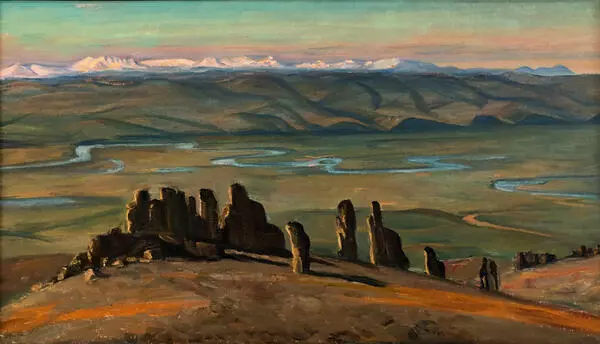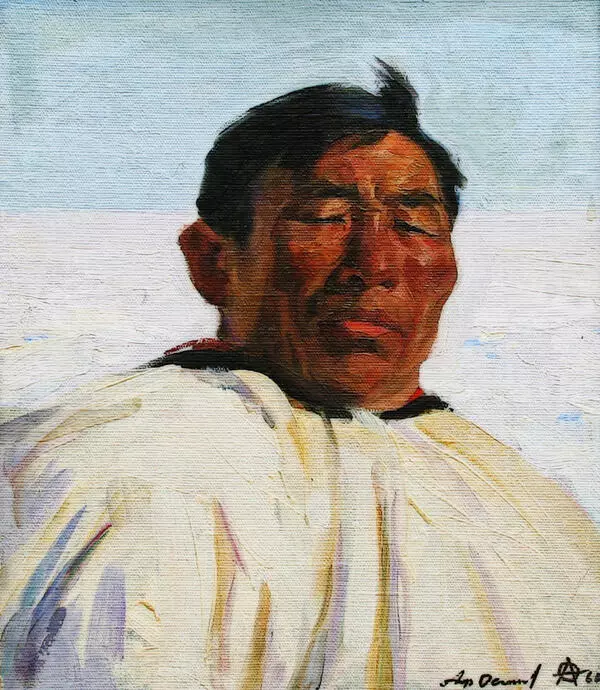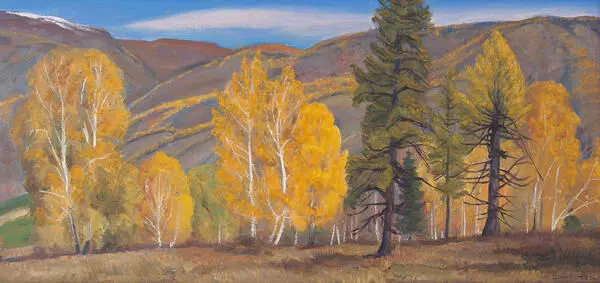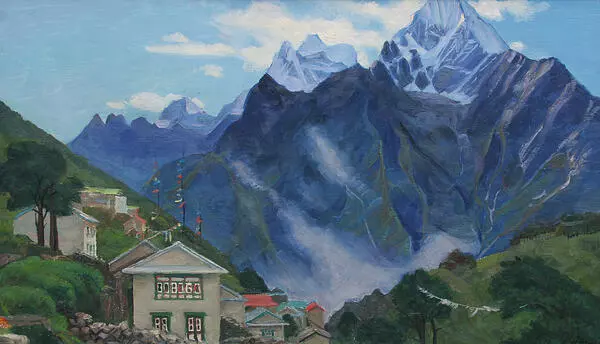The sixties of the 20th century played an important role in the development of fine art in Yakutia. This time is characterized by intense artistic and story-themed searches. Thus, the composition ‘By the Hearth’ painted by the master of the beautiful sight Afanasy Osipov was created in 1961 after the artist’s trip to the North of his native republic. Afanasy Osipov is a famous Yakut painter, People’s Artist of the USSR, and the winner of state prizes.
On the canvas sustained in a thick and dense color, Osipov captured the northerner in her seclusion. Her characteristic pose, expressive hand gestures, and facial expressions emphasize her thoughtful and reserved character. She is dressed in national clothes with complex ornaments that contain encrypted meanings. The upper space of the yaranga is represented by large layers of neutral earthy shades, which deepens the perspective. With short, quick strokes, Afanasy Osipov manages to convey the movement of the flame.
The cult of hearth and fire is widespread among the Northern peoples. In the artist’s canvas, the hearth has an open shape, which emphasizes the nomadic nature of the dwelling. This fire illuminated the space. It was used for heating, cooking food and protecting from wild animals.
In the center of the painting, the author places the image of a woman. Among the Northern peoples, she has long been considered the guardian of the hearth, thus passing on the knowledge of handling fire from generation to generation. In ancient pagan cultures, the fire element is often revered as a living being that has a soul. Among the pagans, it is common to perform rites with fire. They address it with speech and feed it with the best food.
Throughout his career, Afanasy Osipov studied the spiritual and material culture of the small indigenous peoples of Siberia and the Far East, showed in his works the poetry of everyday life of strong-willed inhabitants of permafrost lands. His works are stored not only in the National Art Museum of the Republic of Sakha (Yakutia), but also in the State Russian Museum, the State Tretyakov gallery, and private collections in Russia and abroad.
On the canvas sustained in a thick and dense color, Osipov captured the northerner in her seclusion. Her characteristic pose, expressive hand gestures, and facial expressions emphasize her thoughtful and reserved character. She is dressed in national clothes with complex ornaments that contain encrypted meanings. The upper space of the yaranga is represented by large layers of neutral earthy shades, which deepens the perspective. With short, quick strokes, Afanasy Osipov manages to convey the movement of the flame.
The cult of hearth and fire is widespread among the Northern peoples. In the artist’s canvas, the hearth has an open shape, which emphasizes the nomadic nature of the dwelling. This fire illuminated the space. It was used for heating, cooking food and protecting from wild animals.
In the center of the painting, the author places the image of a woman. Among the Northern peoples, she has long been considered the guardian of the hearth, thus passing on the knowledge of handling fire from generation to generation. In ancient pagan cultures, the fire element is often revered as a living being that has a soul. Among the pagans, it is common to perform rites with fire. They address it with speech and feed it with the best food.
Throughout his career, Afanasy Osipov studied the spiritual and material culture of the small indigenous peoples of Siberia and the Far East, showed in his works the poetry of everyday life of strong-willed inhabitants of permafrost lands. His works are stored not only in the National Art Museum of the Republic of Sakha (Yakutia), but also in the State Russian Museum, the State Tretyakov gallery, and private collections in Russia and abroad.



